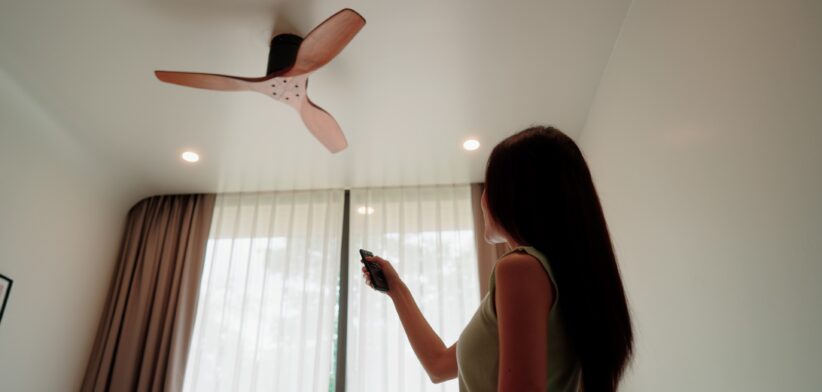Ceiling fans act like ovens when room temperatures exceed 40°C and should be avoided, according to a new study.
Griffith University’s Dr Fergus O’Connor said ceiling fans were best used early during heat exposure and when ambient temperatures were below 33°C.
“Furthermore, fans can worsen heat strain when the temperature exceeds 40°C, and a common cooling intervention can make your home more like a convection oven than a cool oasis,” Dr O’Connor said.
“People may experience fatigue, dizziness, reduced cognitive function, and if exposure continues, heat-related illnesses,” he said.
Dr O’Connor said the research from the South-East Queensland university set out to evaluate whether ceiling fans reduced core body temperature and physiological strain in bed-resting older adults who had been exposed to prolonged indoor heat of 31°C and 45 percent relative humidity, typical indoor environments experienced during summer in the region.
He said ceiling fan use significantly reduced peak core temperature by 0.2°C, heart rate by five beats per minute, and thermal discomfort, however, heat induced strain was not fully mitigated.
“In ambient conditions of 31°C and 45 per cent relative humidity, ceiling fans were not wholly efficacious and did not fully ameliorate heat-induced physiological strain.
“Under the environmental conditions tested, core temperatures were elevated by nearly 1°C and heart rate was elevated by 22 beats per minute, even with the use of a fan.
“Therefore, while ceiling fans offer some benefits, they are not as wholly effective as a standalone cooling mechanism and should be combined with air conditioning, where possible.”
He said setting an air conditioner to around 26°C, coupled with a ceiling fan, was an ideal option to minimise electrical consumption and avoid the negative health effects of heat exposure.
Dr O’Connor said as climate change drove more frequent and intense heatwaves, and indoor overheating becomes more commonplace, sustainable and accessible cooling interventions such as ceiling fans would play a vital role in protecting people’s health, particularly for older adults.
“However, recommendations for public health guidance should be steeped in interventions which are effective, and not just interventions that will likely not cause harm,” he said.
Read the full study: Effect of Ceiling Fans on Core Temperature in Bed-Resting Older Adults Exposed to Indoor Overheating.








